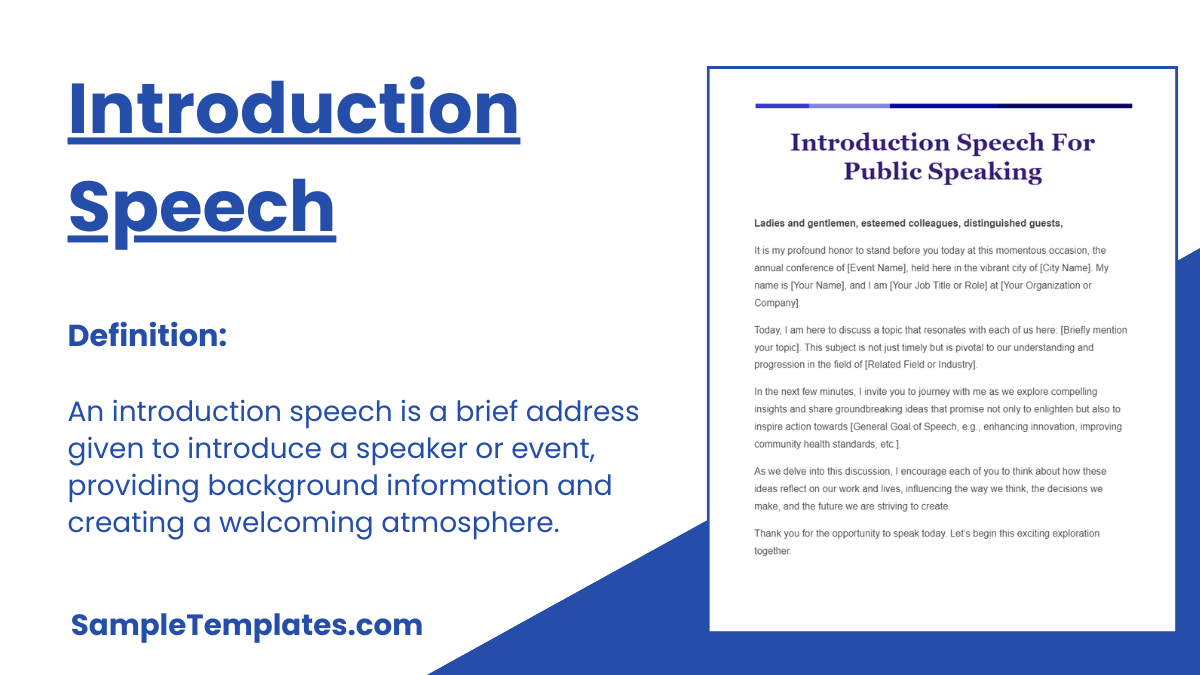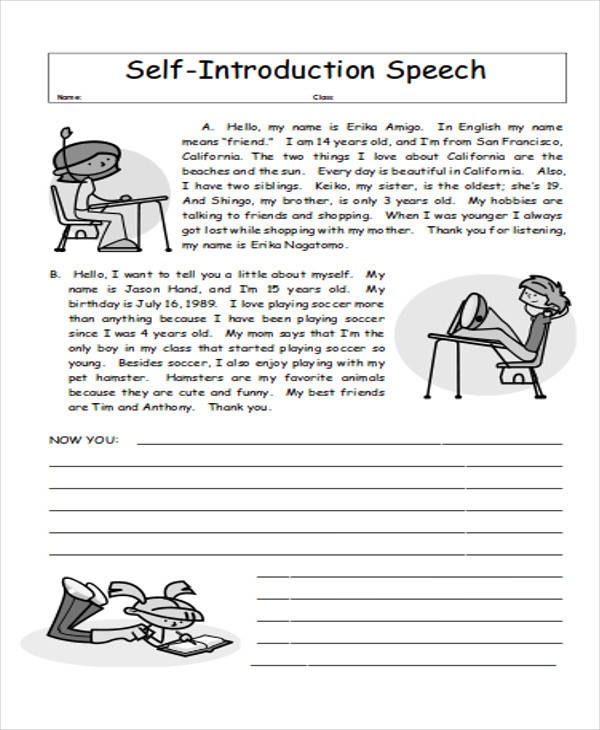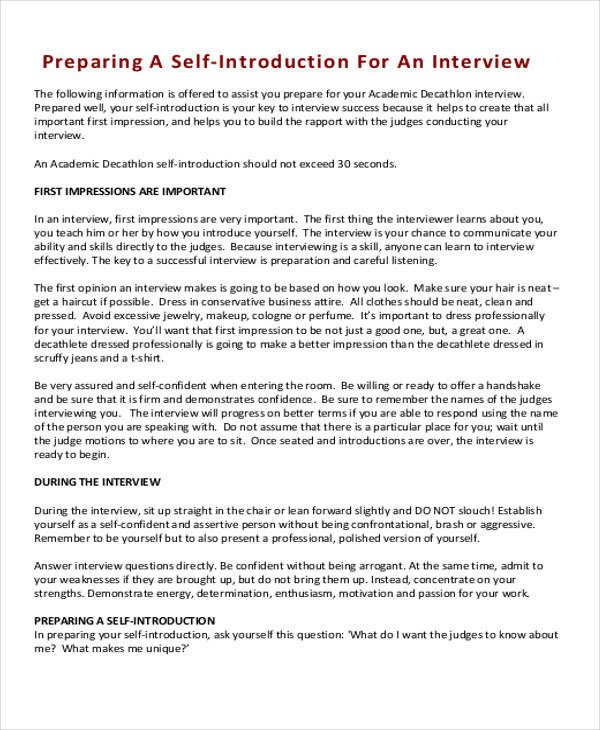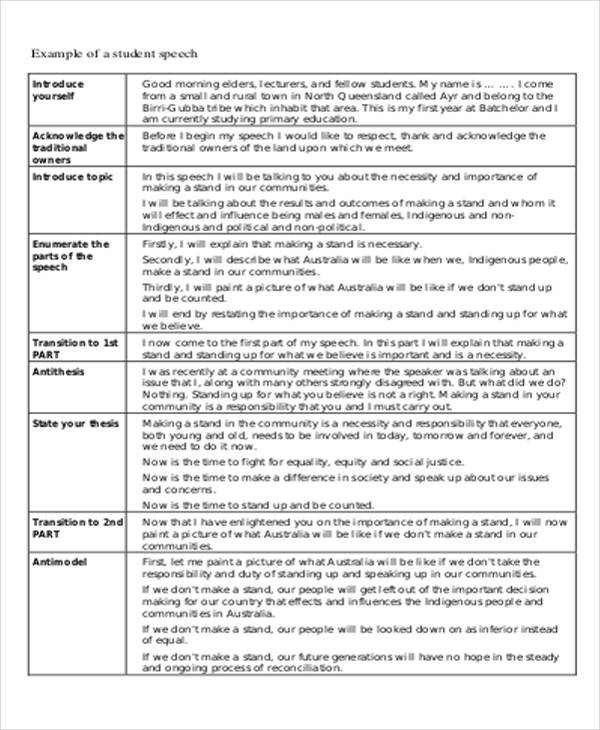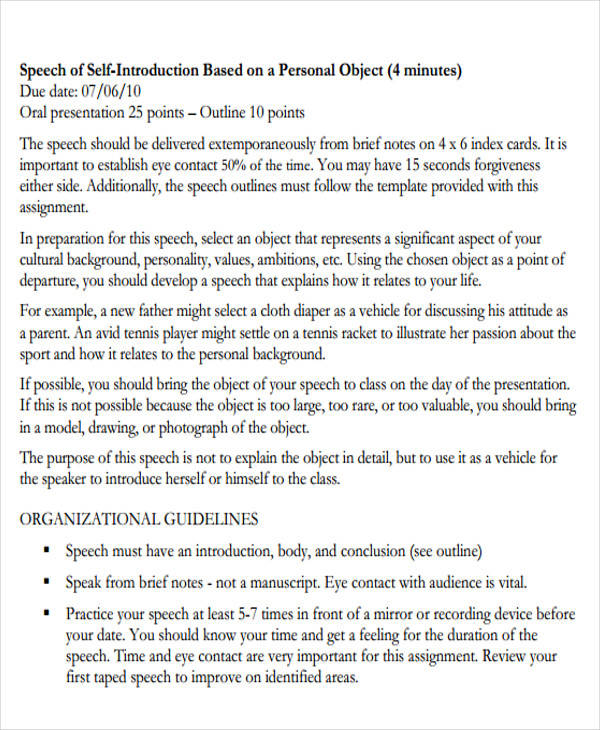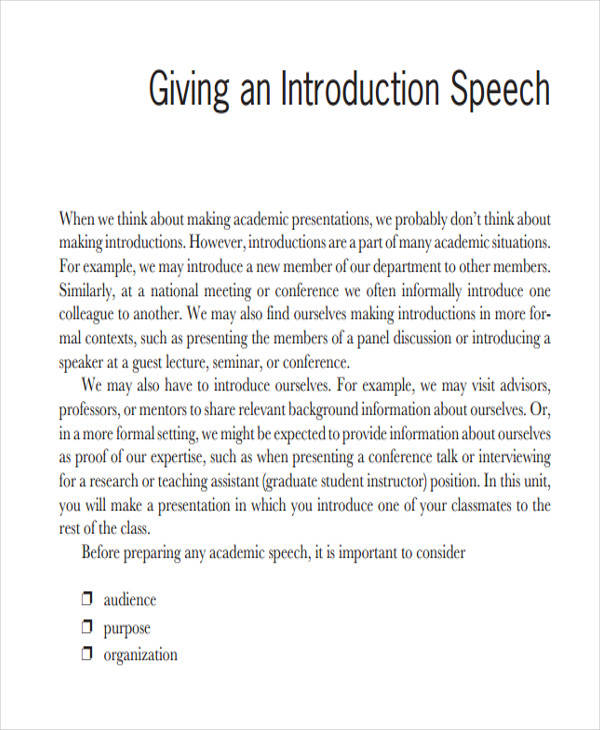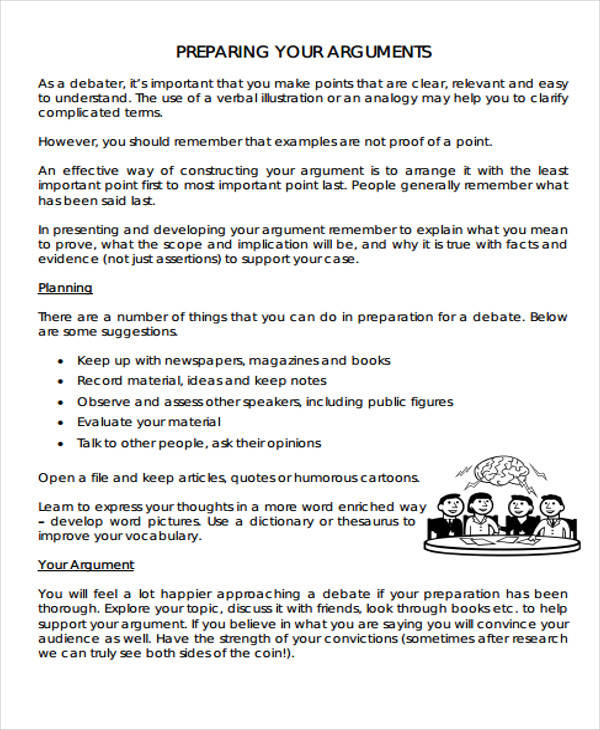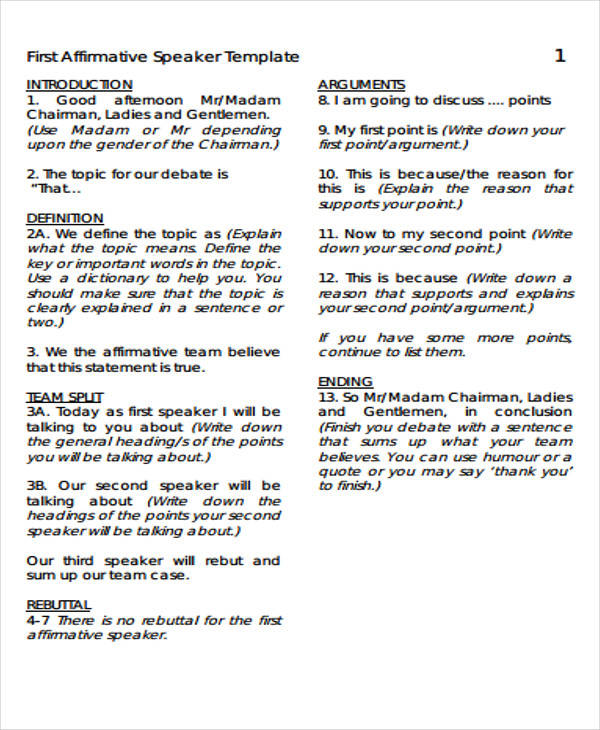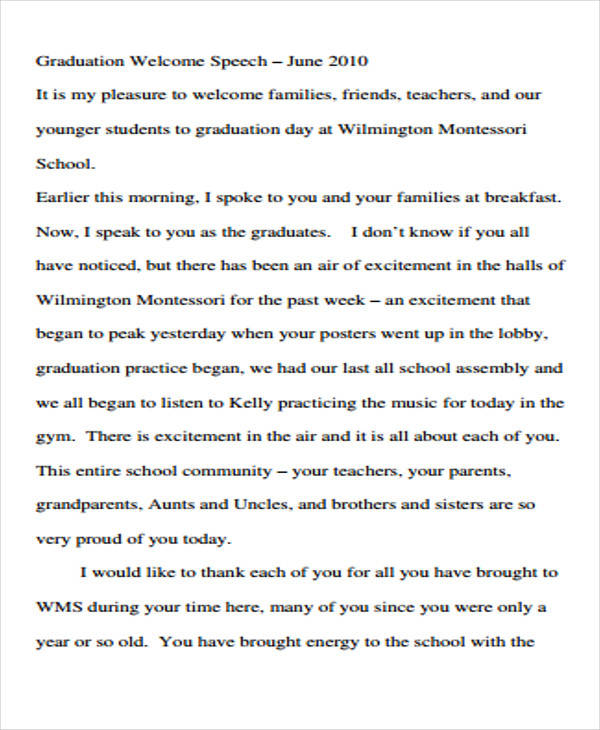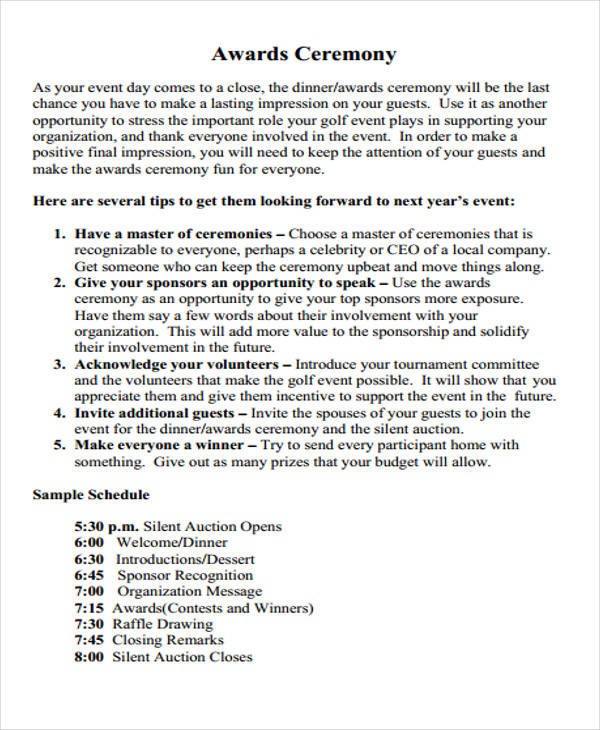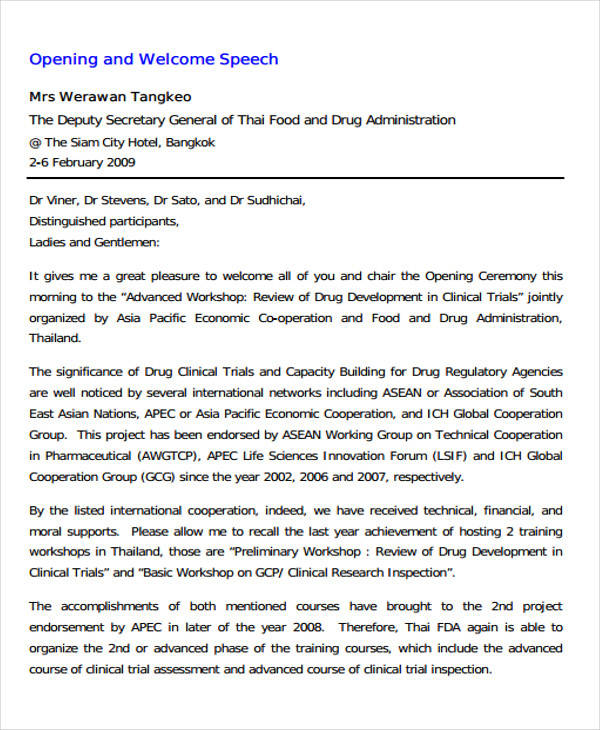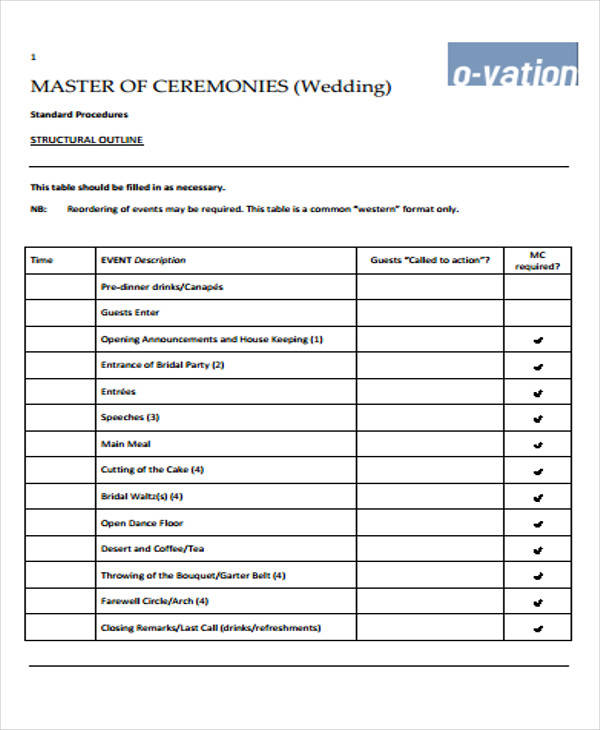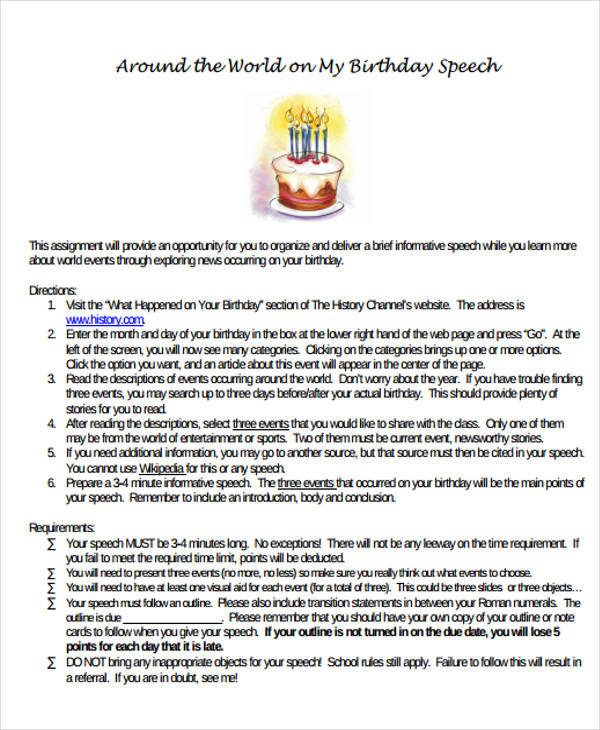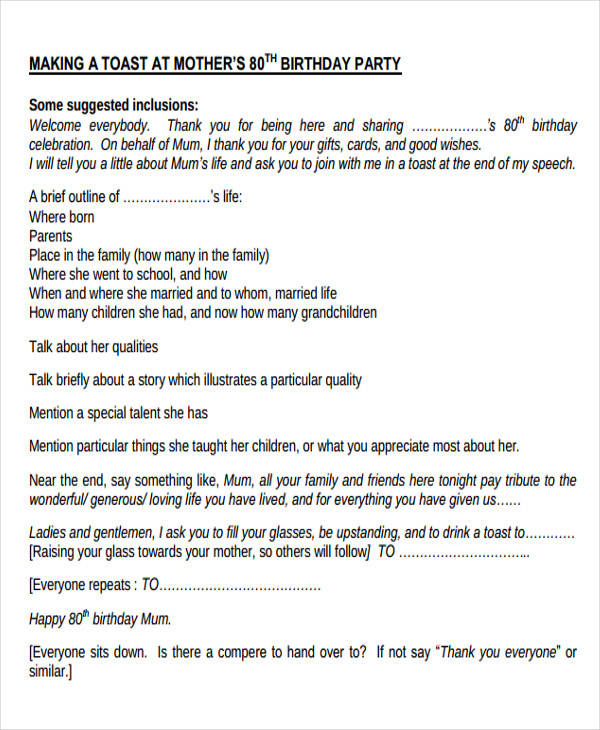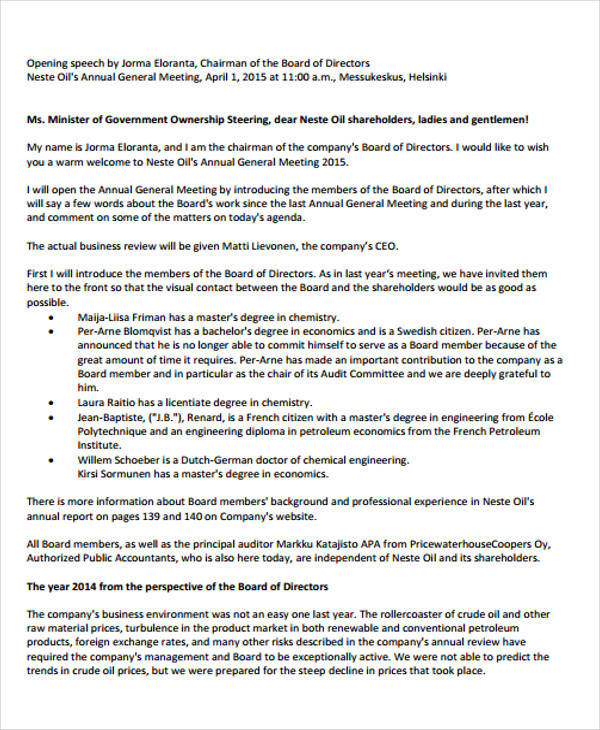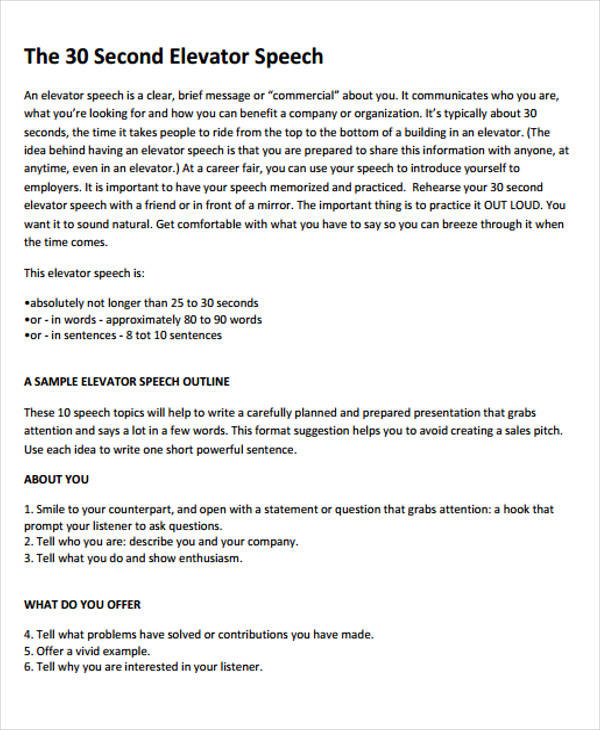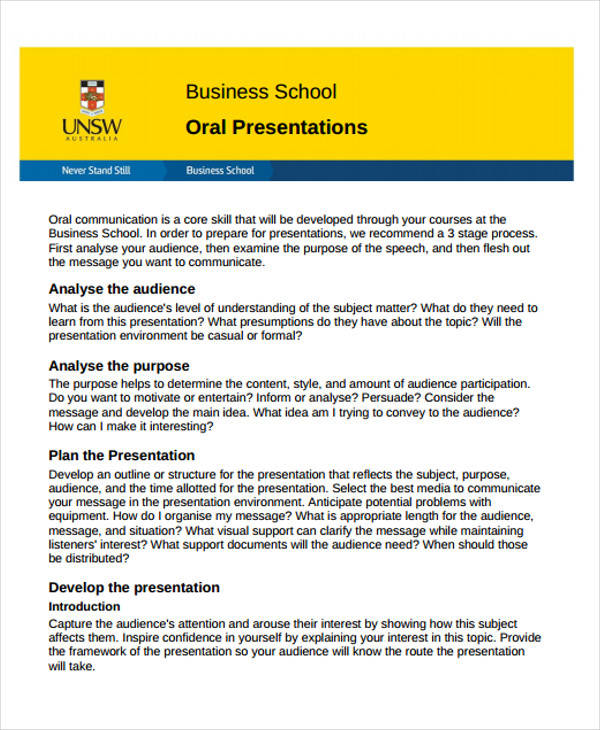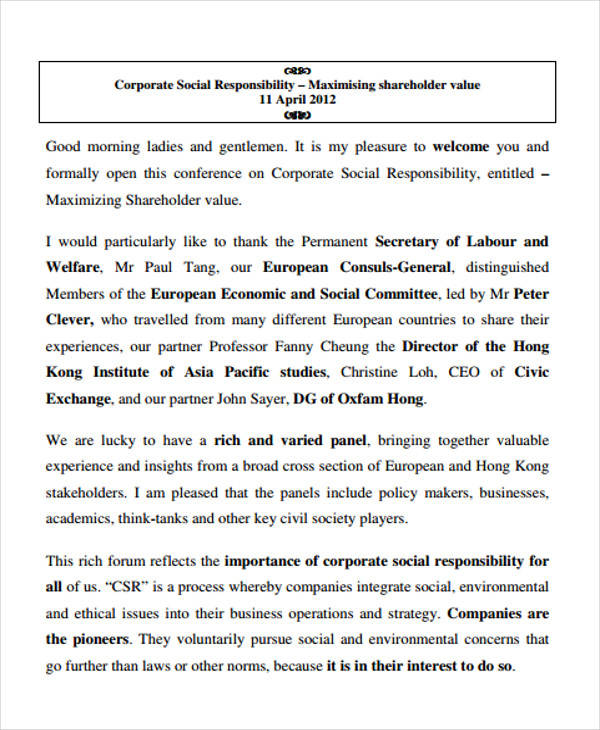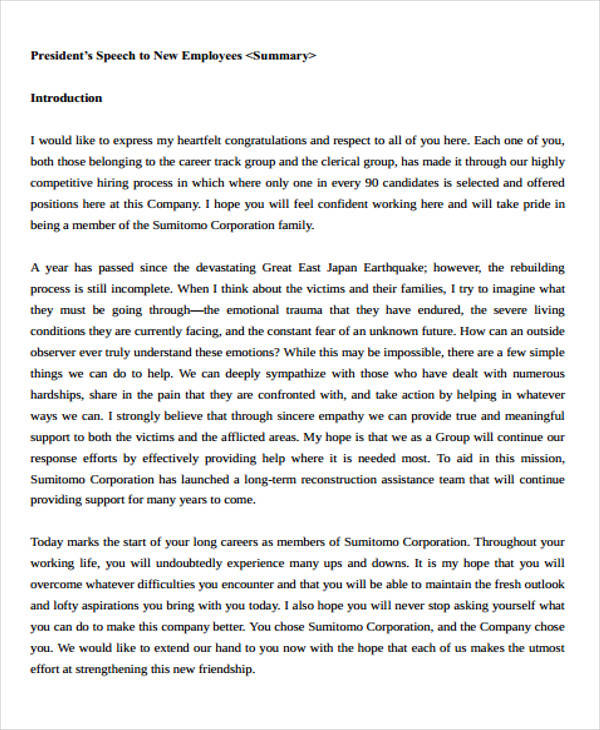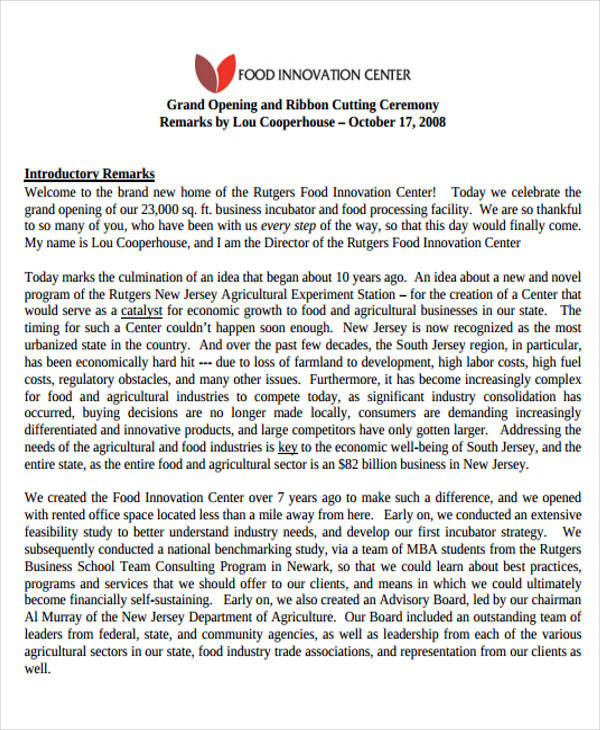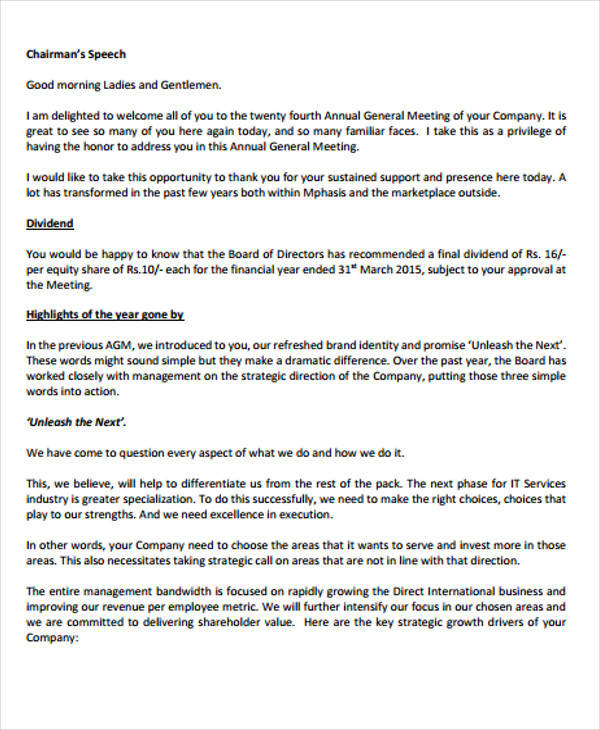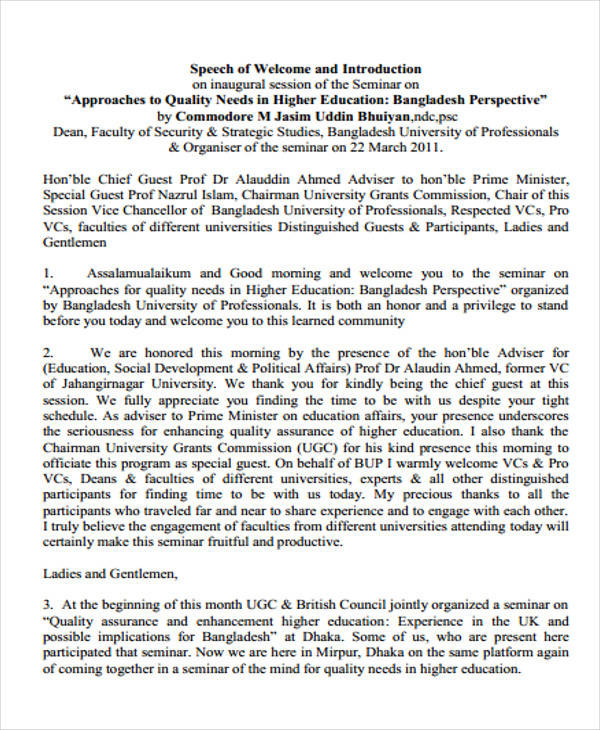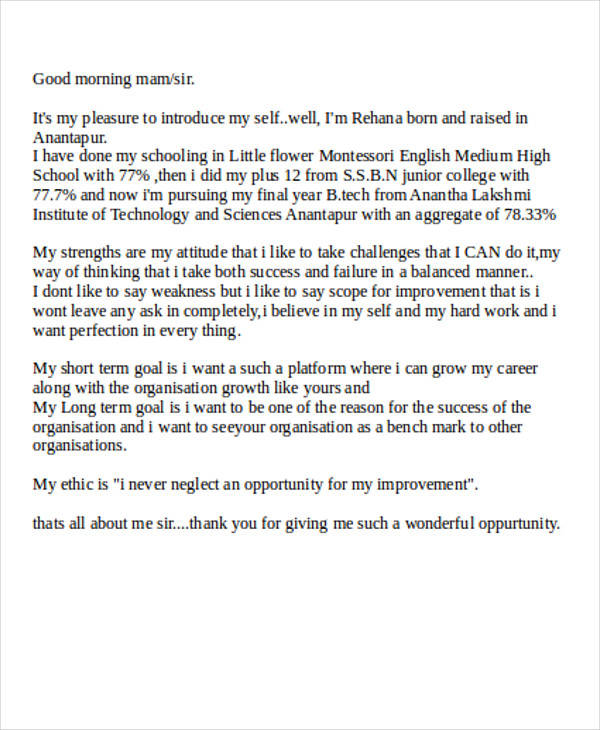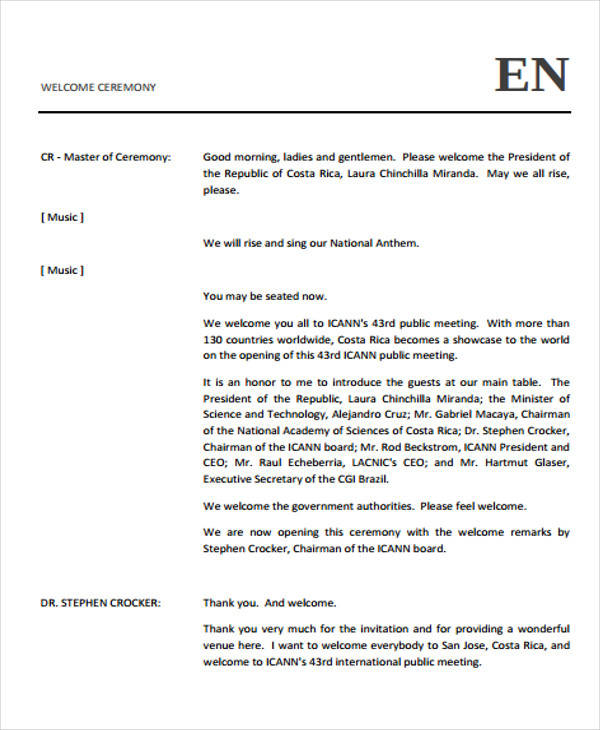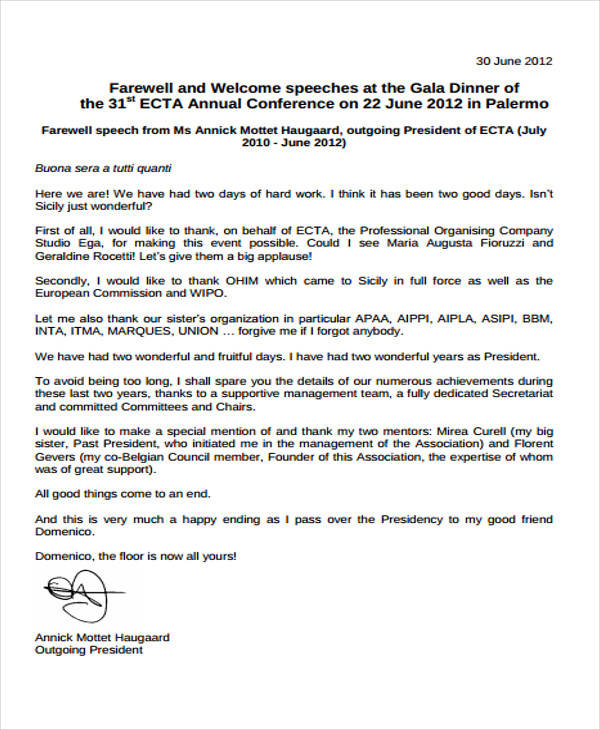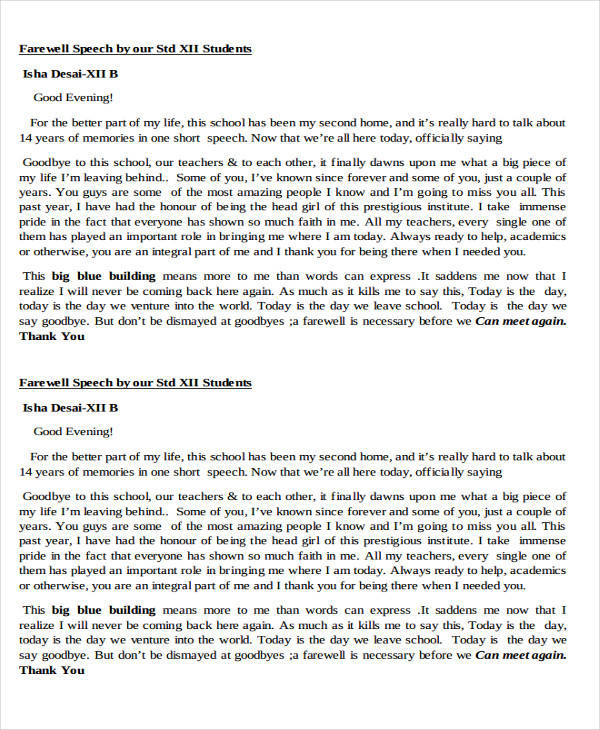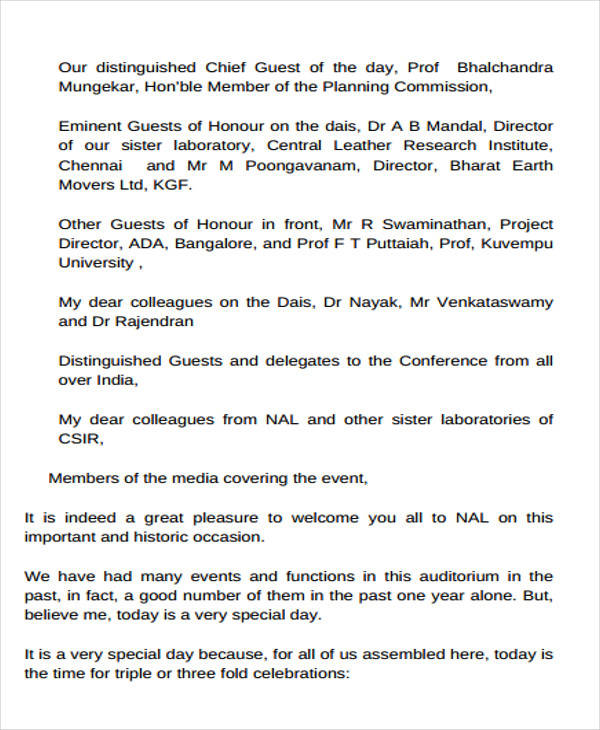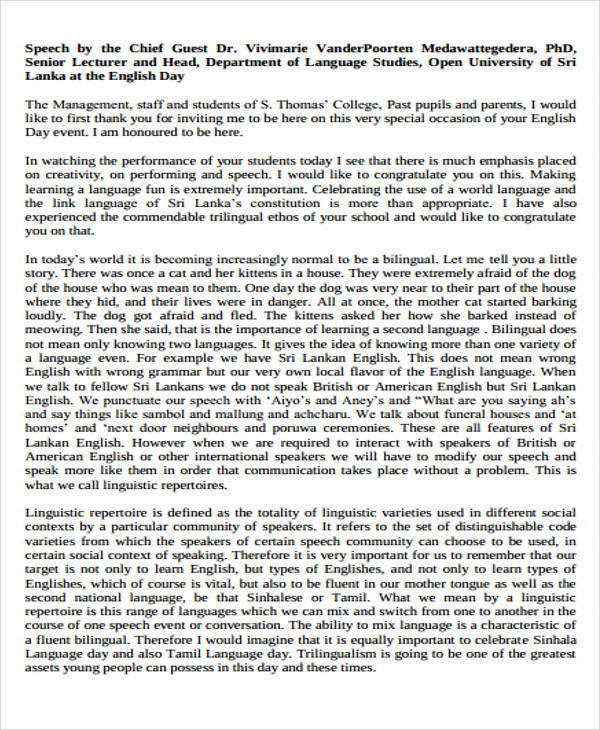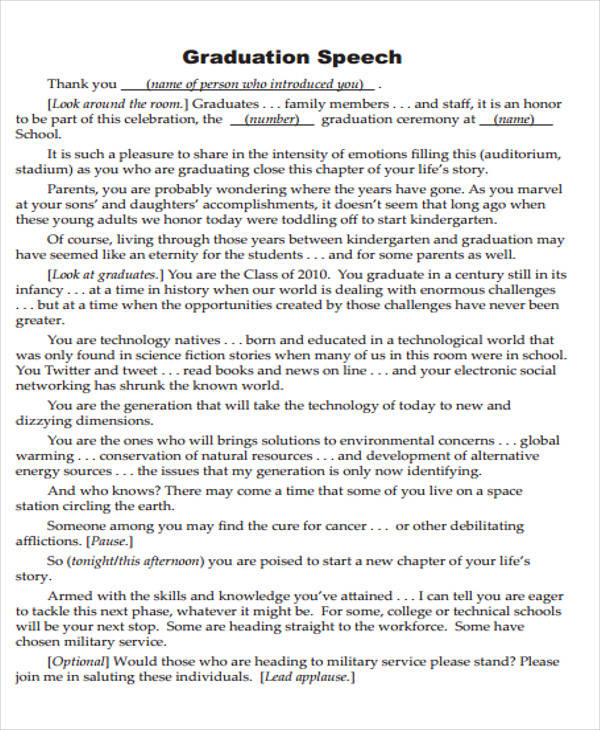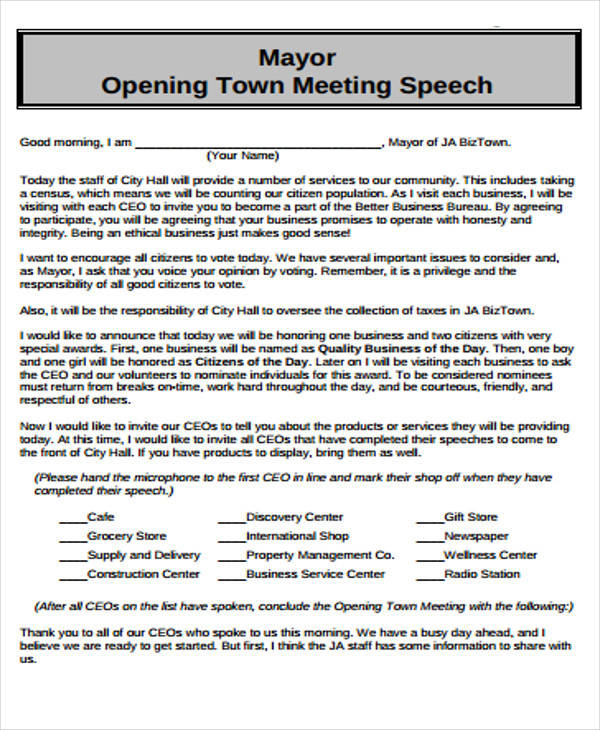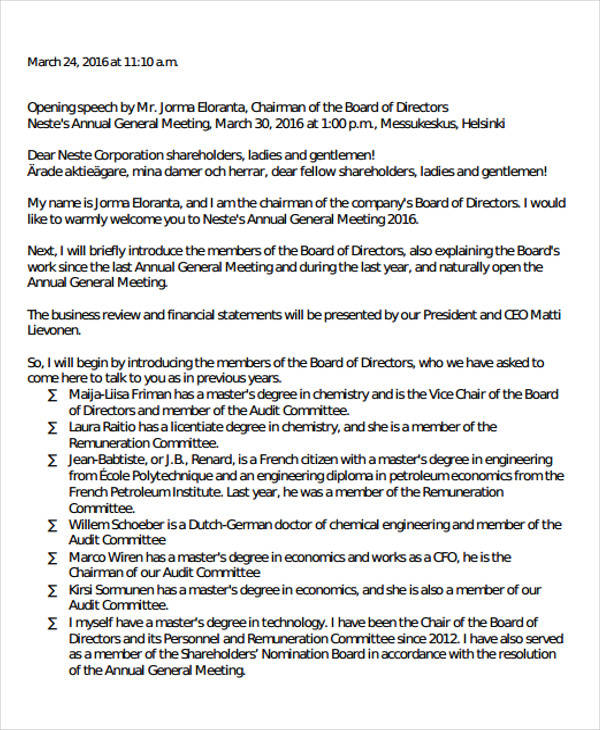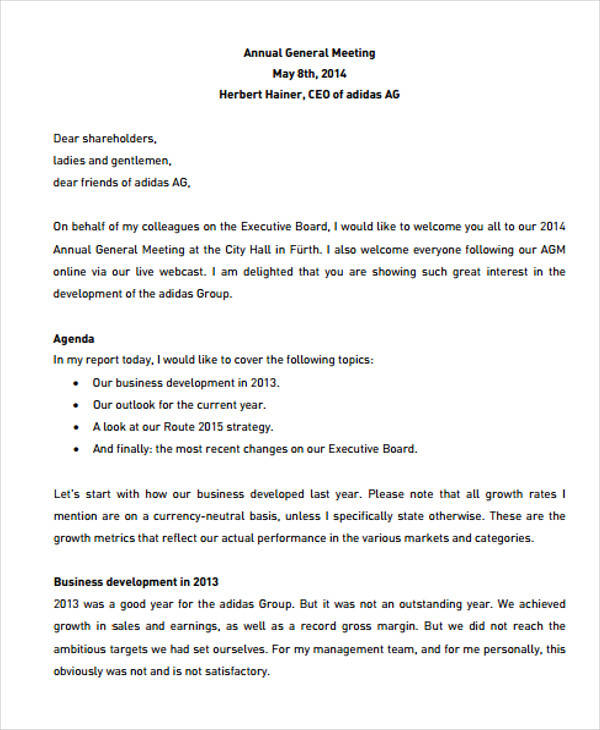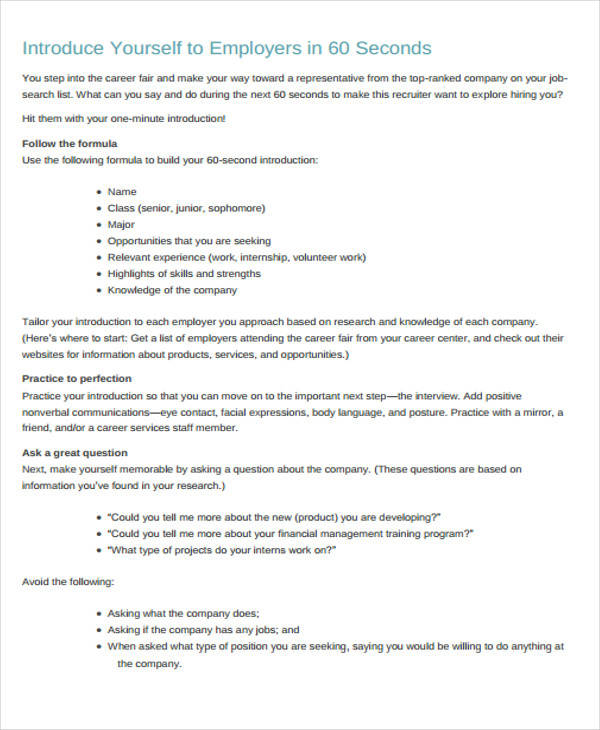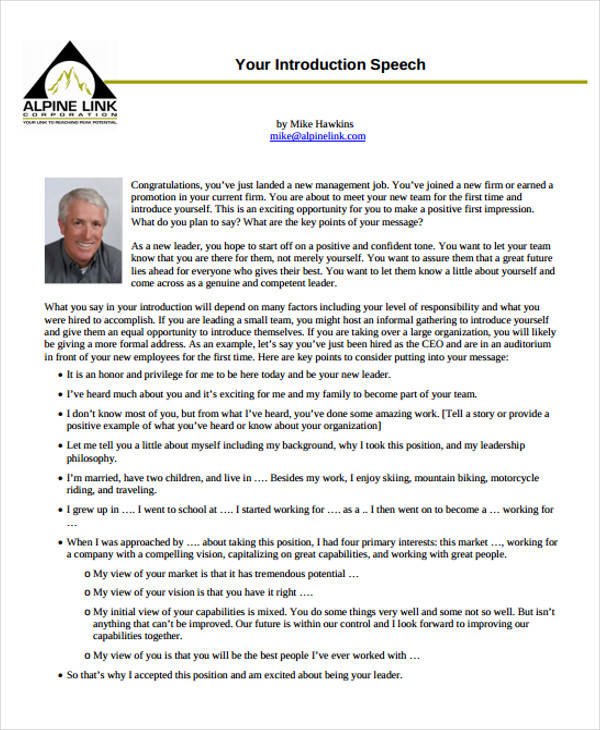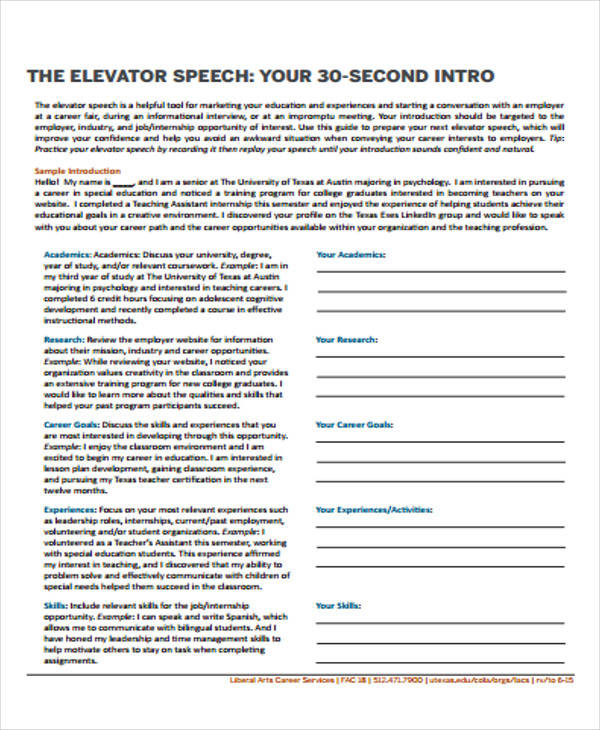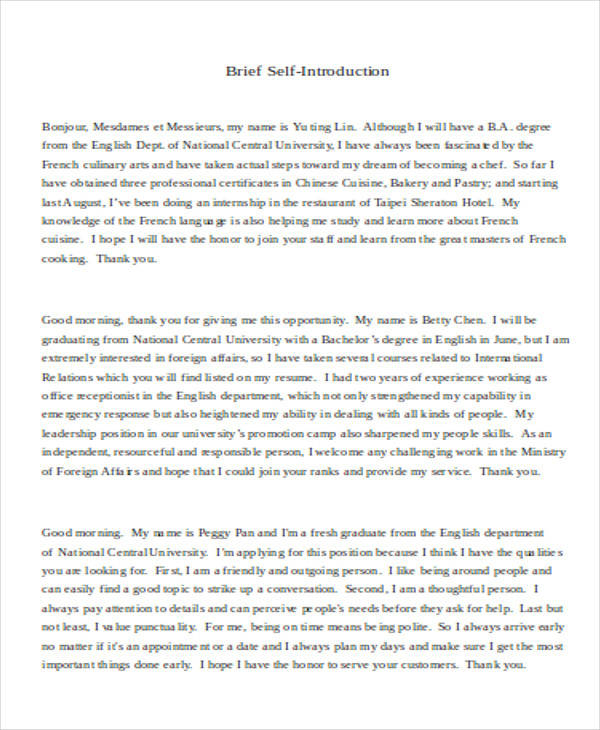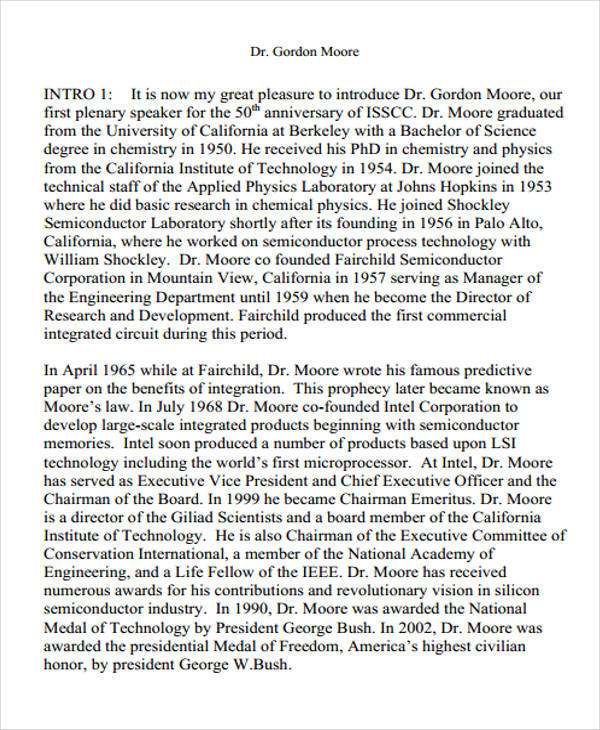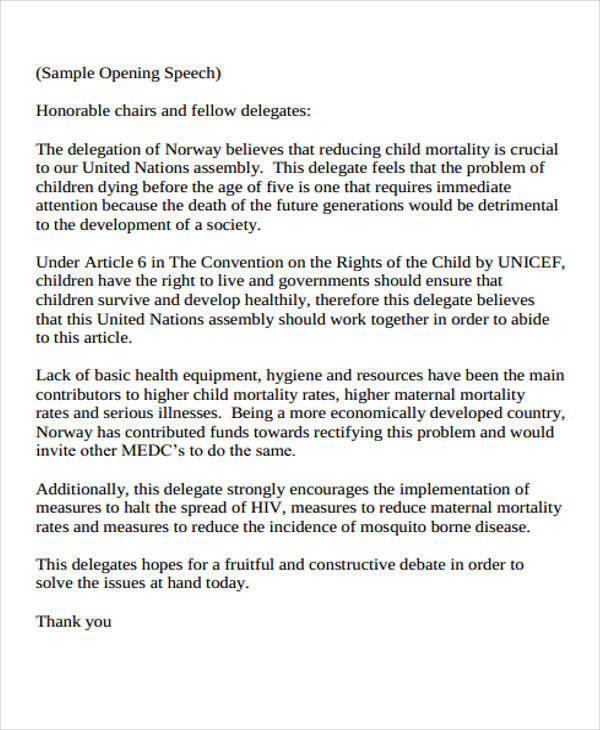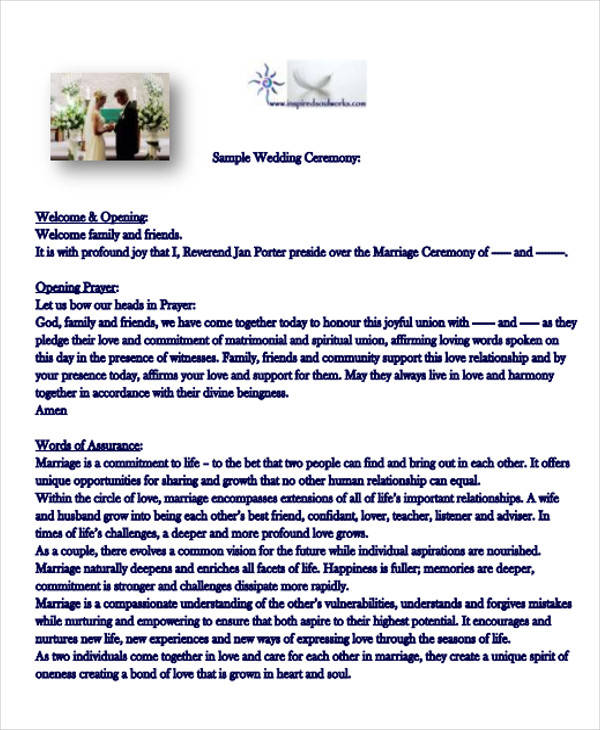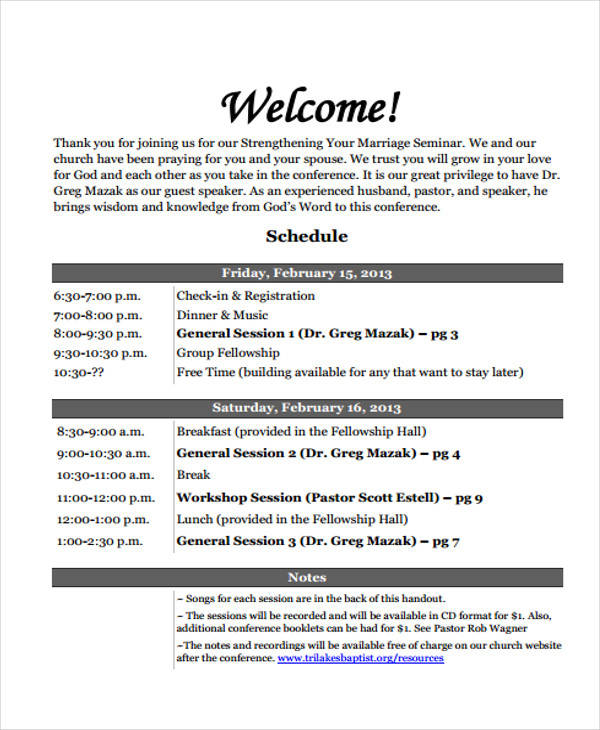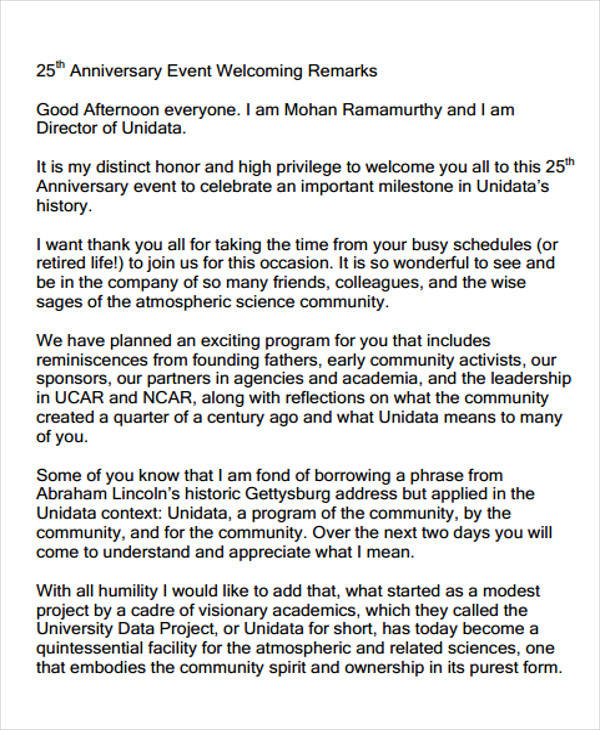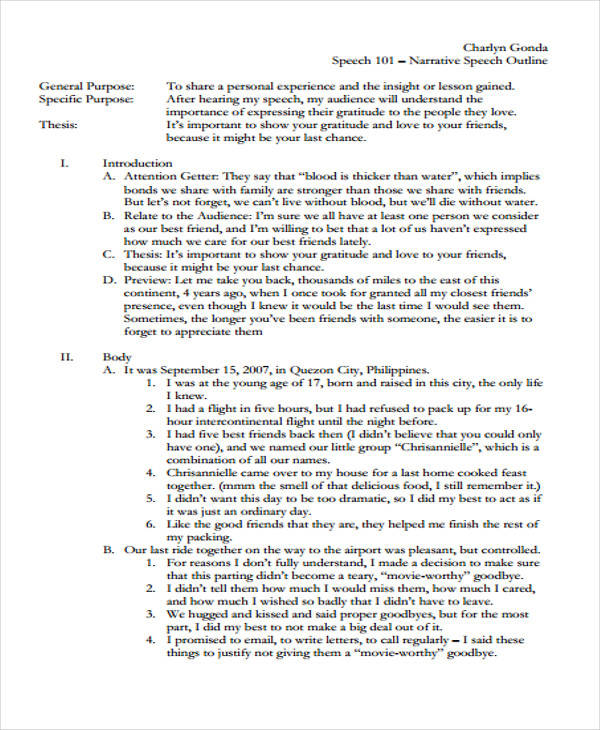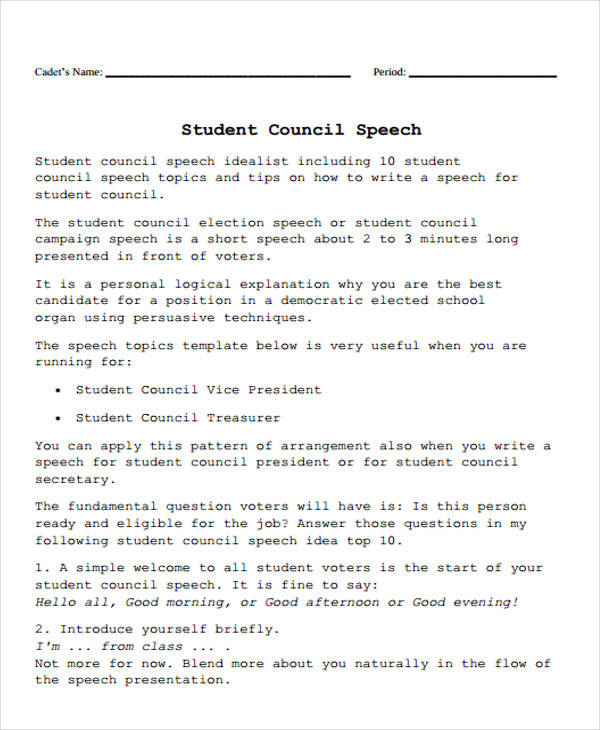A speech is a series of sentences used for the explanation, motivation, or the act of informing a large group of people through speaking in person. In shorter terms, a speech is essentially speaking in person to a large group of people. A speech is necessary whenever we wish to inform a large group of people about a topic of interest such as politics, an introduction of a new invention, or even for the mourning of a deceased loved one. You may also see salutatorian speech
In most cases, starting a speech requires you to primarily introduce yourself, so as to catch the attention of the crowd and to give them the perspective or feel of knowing who you are, which in turn will create a sense of friendliness and familiarity between crowd and speaker. A speaker must try to motivate the crowd so as to make them more aware and responsive to your speech. You may also see tribute speech examples.
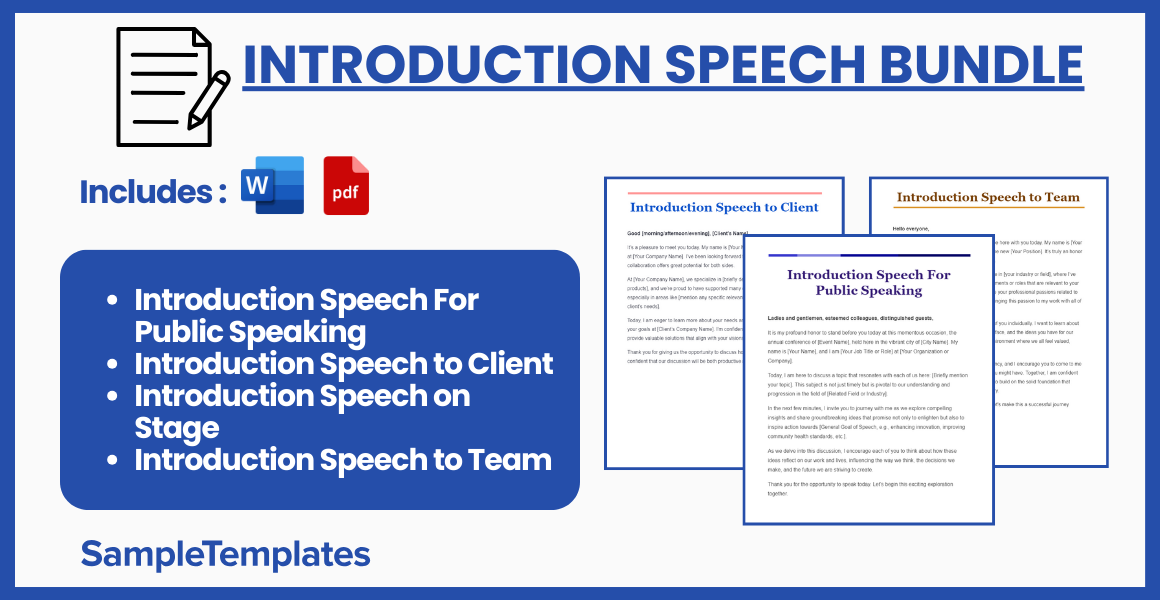
Download Introduction Speech Bundle
Introduction Speech For Public Speaking
Ladies and gentlemen, esteemed colleagues, distinguished guests,
It is my profound honor to stand before you today at this momentous occasion, the annual conference of [Event Name], held here in the vibrant city of [City Name]. My name is [Your Name], and I am [Your Job Title or Role] at [Your Organization or Company].
Today, I am here to discuss a topic that resonates with each of us here: [Briefly mention your topic]. This subject is not just timely but is pivotal to our understanding and progression in the field of [Related Field or Industry].
In the next few minutes, I invite you to journey with me as we explore compelling insights and share groundbreaking ideas that promise not only to enlighten but also to inspire action towards [General Goal of Speech, e.g., enhancing innovation, improving community health standards, etc.].
As we delve into this discussion, I encourage each of you to think about how these ideas reflect on our work and lives, influencing the way we think, the decisions we make, and the future we are striving to create.
Thank you for the opportunity to speak today. Let’s begin this exciting exploration together.
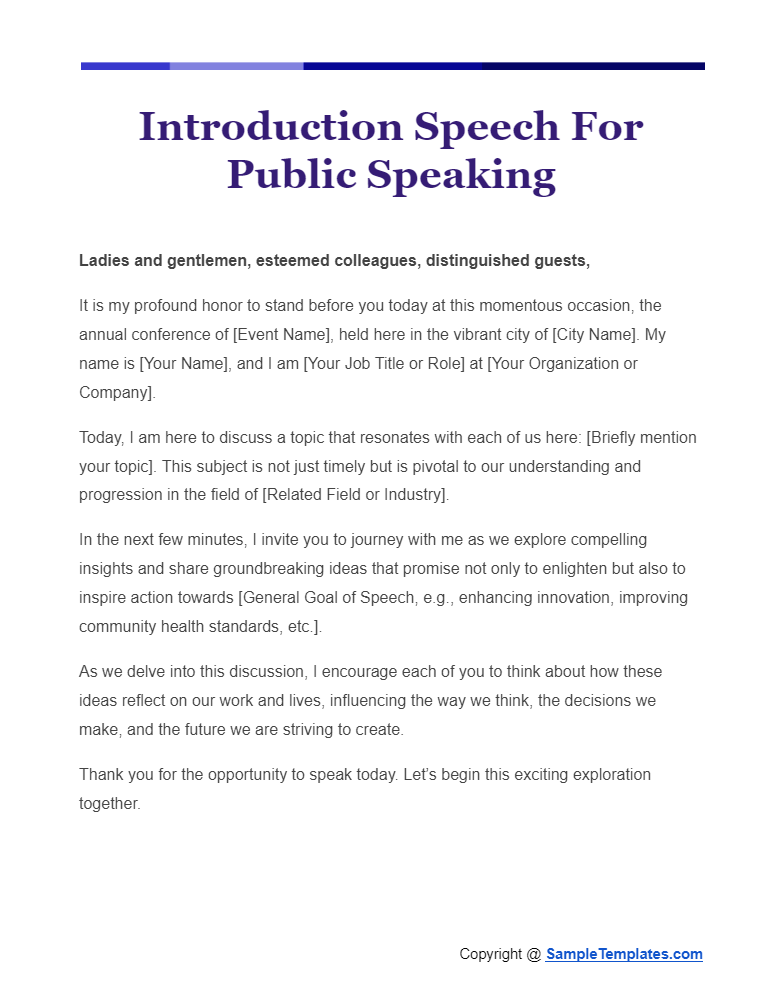
Introduction Speech to Client
Good [morning/afternoon/evening], [Client’s Name],
It’s a pleasure to meet you today. My name is [Your Name], and I am the [Your Position] at [Your Company Name]. I’ve been looking forward to our meeting, as I believe our collaboration offers great potential for both sides.
At [Your Company Name], we specialize in [briefly describe your company’s services or products], and we’re proud to have supported many clients in achieving their goals, especially in areas like [mention any specific relevant areas of expertise related to the client’s needs].
Today, I am eager to learn more about your needs and discuss how we can support your goals at [Client’s Company Name]. I’m confident that our team’s expertise can provide valuable solutions that align with your visions and requirements.
Thank you for giving us the opportunity to discuss how we can work together. I am confident that our discussion will be both productive and insightful.
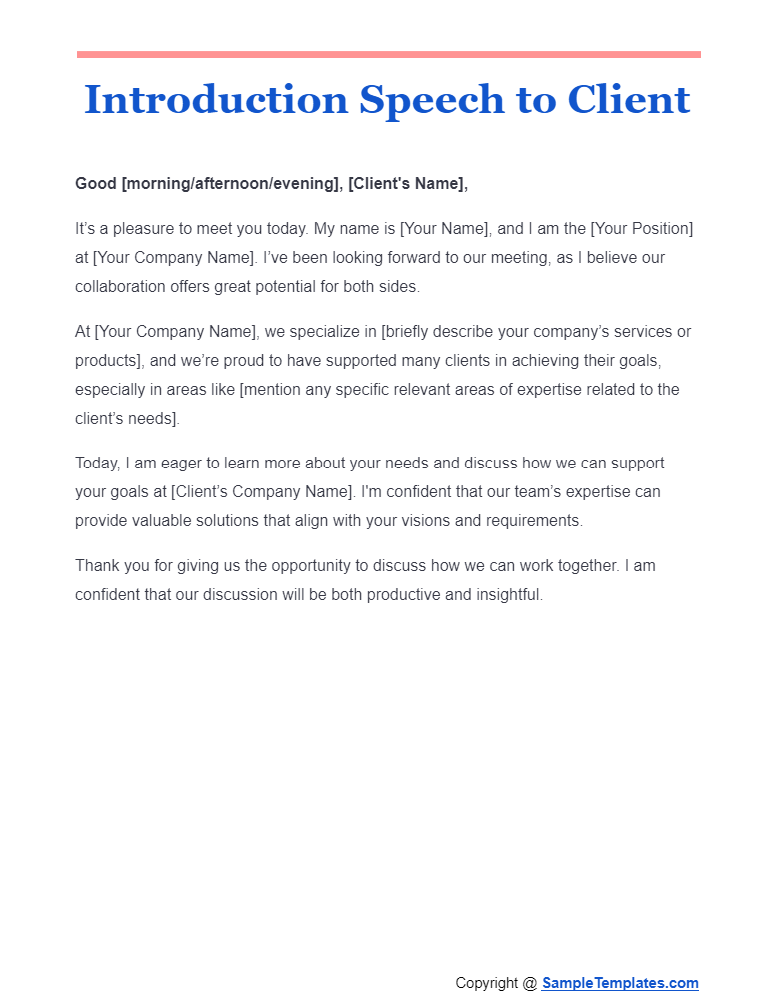
Introduction Speech on Stage
Ladies and gentlemen,
Good [morning/afternoon/evening], and welcome! It’s my absolute pleasure to be here with you today at [Event or Venue Name]. My name is [Your Name], and I am [Your Job Title or Role] at [Your Organization or Company]. Today, I have the privilege of discussing [Topic or Purpose of the Event].
We are gathered here to explore themes that are not only pivotal to our industry but also crucial in shaping the future landscape of [Specific Field or Topic]. Whether you’re a seasoned professional or new to the field, today’s discussions will provide valuable insights and actionable knowledge.
In the next few hours, we’ll hear from some of the brightest minds in [Field or Industry]. They will share their experiences, challenges, and successes, offering us a unique opportunity to learn from the best and apply these lessons in our own contexts.
Before we dive into our packed agenda, I’d like to take a moment to thank our sponsors, [Name Sponsors if applicable], and all of you for being here. Your enthusiasm and commitment make events like this possible.
Without further ado, let’s begin this journey of learning and discovery. Thank you for your attention, and I hope you find today’s event both enriching and inspiring!
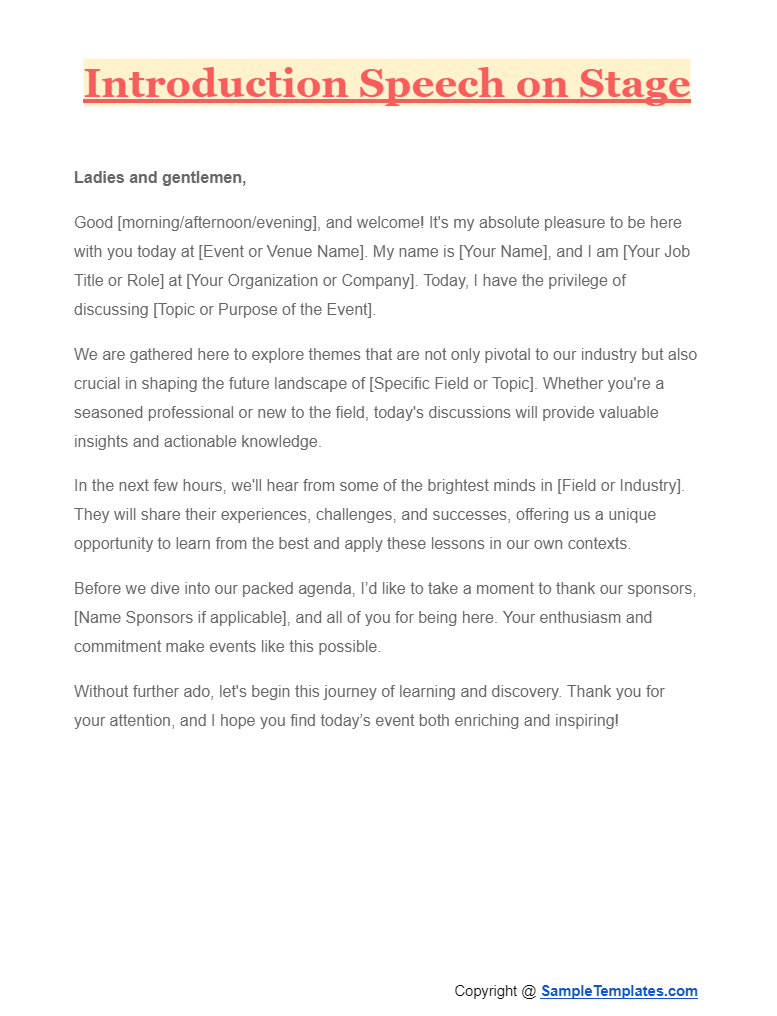
Introduction Speech to Team
Hello everyone,
First off, I want to express how thrilled I am to be here with you today. My name is [Your Name], and I am joining [Company Name] as the new [Your Position]. It’s truly an honor to be part of such a dynamic and talented team.
I come to you with [number] years of experience in [your industry or field], where I’ve had the privilege of [mention a few key achievements or roles that are relevant to your new role]. I’m passionate about [briefly describe your professional passions related to the team’s goals], and I’m looking forward to bringing this passion to my work with all of you.
In the coming weeks, I plan to meet with each of you individually. I want to learn about your professional journeys, the challenges you face, and the ideas you have for our future work together. My goal is to foster an environment where we all feel valued, supported, and motivated to excel.
I believe in open communication and transparency, and I encourage you to come to me with any suggestions, concerns, or thoughts you might have. Together, I am confident that we can achieve great things and continue to build on the solid foundation that makes [Company Name] a leader in our industry.
Thank you for welcoming me into your team. Let’s make this a successful journey together!
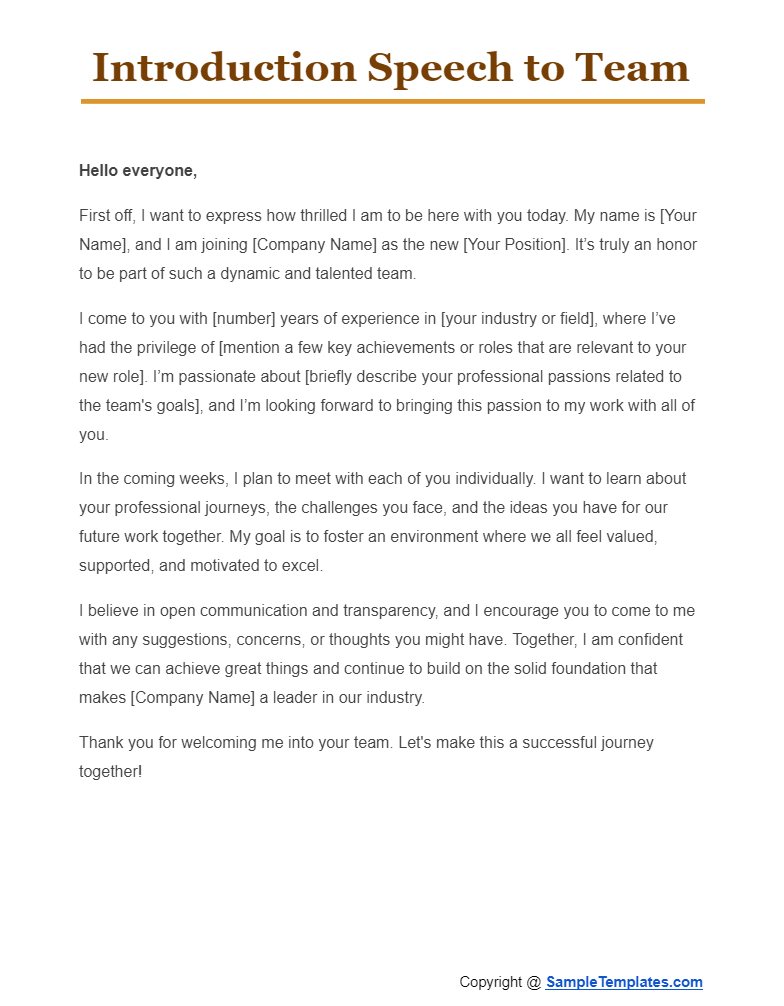
Browse More Templates On Introduction Speech
Self-Introduction Speech in PDF
Self-Introduction Speech for Interview
Importance of Introduction Speech
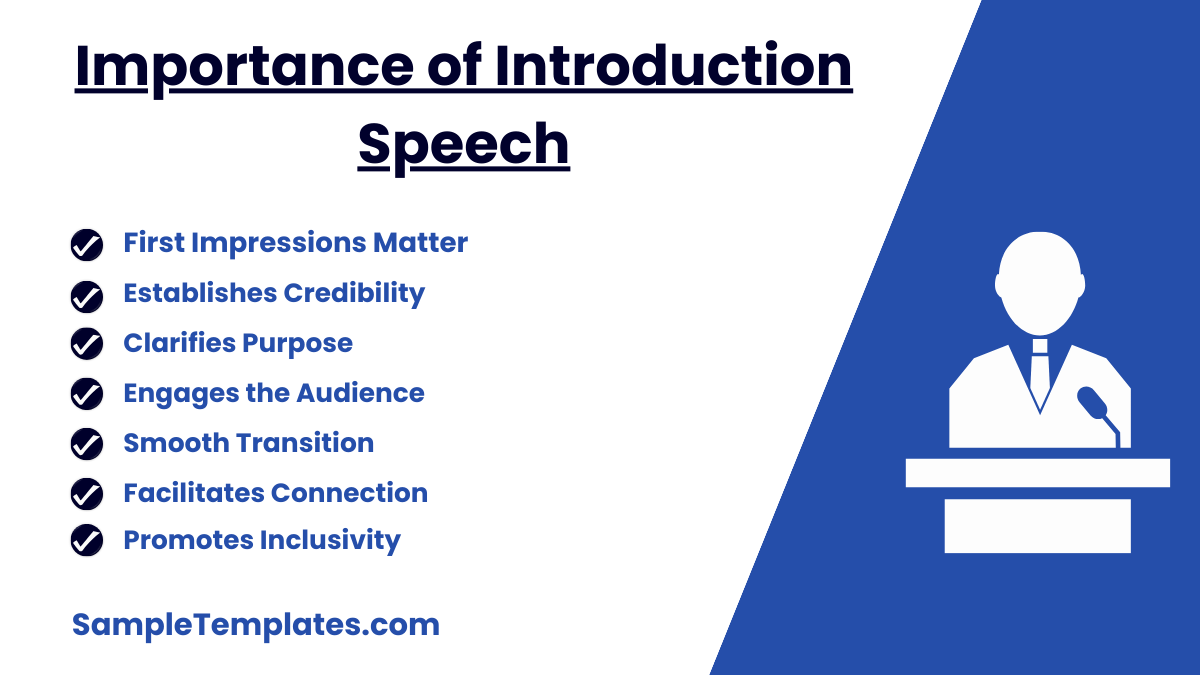
An introduction speech plays a crucial role in various contexts, whether it’s at social events sample, professional meetings, or public gatherings. Here’s why an introduction speech is so important:
1. First Impressions Matter
- An introduction speech is often your first opportunity to engage with an audience. It sets the tone and establishes the first impression, which can significantly influence how you are perceived by others. A strong, clear, and confident introduction can help ensure that this first impression is a positive one.
2. Establishes Credibility
- By effectively introducing yourself and highlighting your background, achievements, and expertise, you establish your credibility. This helps build trust and respect with your audience, which is especially important in professional and public speaking scenarios.
3. Clarifies Purpose
- A good introduction speech clearly outlines the purpose of the event or the main topics of discussion. This helps to set expectations for the audience, ensuring they are mentally prepared for what is to come and can follow along more effectively.
4. Engages the Audience
- An engaging introduction captures the attention of the audience right from the start. By sparking interest with intriguing facts, questions, or anecdotes, you can keep the audience invested in your subsequent messages.
5. Smooth Transition
- Introduction speeches provide a smooth segue into the main content of your presentation, discussion, or meeting. They help transition the audience from their initial curiosity to focused attention on the subject matter at hand.
6. Facilitates Connection
- By sharing personal stories, goals, or visions in your introduction, you can connect with your audience on a more personal level. This emotional connection can make your messages more impactful and memorable.
7. Promotes Inclusivity
- In larger settings or events, a well-crafted introduction speech can make the audience feel included and valued, particularly if it acknowledges their presence, contributions, or participation.
8. Motivates Action
- Particularly in persuasive speeches or calls to action, the introduction can motivate the audience by laying the groundwork for the arguments and inspiring enthusiasm for the topics discussed.
9. Manages Anxiety
- For the speaker, the introduction is an opportunity to manage any nervousness by starting with prepared remarks. Getting through the introduction often builds confidence for the remainder of the speech.
Overall, the introduction speech is not just a formality but a foundational element that supports the effectiveness of your communication, whether you’re leading a meeting, giving a lecture, or speaking at a social event. It’s an essential skill that can enhance both personal and professional interactions.
Self-Introduction Speech for Students
What Is an Introduction Speech and What to Say in an Introduction Speech?
An introduction speech is basically a form of introducing oneself to a crowd of individuals in the hopes of gaining the crowd’s attention to one’s speech. It primarily consists of what you would normally find in a basic introduction when meeting a person for the first time. When speaking to a large group of people, we tend to get nervous and forget what to say when we begin to speak in front of a crowd; however, there is a basic list of what to say when in the crowd. It is simple enough to remember and it doesn’t take much effort. You may also see introductory speech.
1. Always open with a sudden loud noise
- You may think making a loud noise or sound before starting a speech to be counterproductive. For the most part it is, but the purpose of the sound is to shake up your crowd and gain their immediate attention and making them wide awake. You may also see speech writings.
- When making the loud noise however, it is best to try and make it seem accidental so as to not sound so strict.
2. Start the introduction with a simple greeting
- Depending of the time of day, greet the crowd with the appropriate salutation.
- Greeting the crowd will remind them of the time of day and will give the impression of you being approachable and friendly with a sense of formality.You may also see ceremonial speech.
3.Identify yourself to the crowd
- After the greeting, immediately identify yourself by stating your name, age, occupation, and the reason why you are presenting in front of the crowd on that day and time. You may also see student council speech.
- This will give off a sense of familiarity, which will in turn make the crowd more comfortable with your presence and may even listen attentively.
4.Crack a joke or two
- Never underestimate the power of a few good jokes. They can increase the crowd’s or audience’s mood, provided you stated a non-offensive joke.
- Jokes can keep people awake and entertain them.You may also see salutatorian speech
- Jokes can also be a good way to relieve tension and stress as you are presenting in front of a crowd or audience.
- But do keep mind on when and where you state you jokes, some individuals in the crowd or audience may find it offensive.You may also see welcome speech.
5.Share something about yourself
- Share an interesting fact about yourself so as to create an even further sense of familiarity or friendliness between you and the crowd or audience.
- Psychologically speaking, a large group of individuals will be less likely to ignore someone if they are more familiar of with someone, so being more familiar allows others to listen and respond to you more.You may also see presentation speech.
- For the most effect, try to select an interesting fact about yourself relevant to the topic; this will make the audience pay more attention to you and your speech.
6. Give a short summary of the main speech
- Similar to how movies work, give a short “sneak peek” of what your topic is about so as to have the same effects of movie trailers.
- It can give them an idea of your speech.You may also see wedding speech.
- People who would enjoy your topic will pay even more attention toward your speech topic.
7.Start the actual speech
- After you have done all of the steps above, you may start your speech topic knowing full well that your audience will be paying attention to whatever your topic maybe.You may also see campaign speech.
Short Introduction Speeches
Short Self-Introduction Speech Sample
Short Speech About Yourself
What You Should Avoid When Starting an Introduction Speech
Starting an introduction speech effectively is crucial to capturing and retaining the audience’s attention. There are several common pitfalls to avoid that can undermine your impact right from the beginning:
1. Starting Without a Clear Focus
- Avoid beginning your speech without a clear and concise opening. Lack of focus can confuse the audience about the purpose and direction of your talk.
2. Using Clichés or Overused Openings
- Steer clear of overused phrases like “Webster’s dictionary defines…” as they can seem uninspired and might cause the audience to disengage.
3. Apologizing
- Starting with an apology for your nervousness or lack of preparation can undermine your credibility and authority right from the start. Unless there is a significant issue or mistake to address, it’s best to keep the tone confident and positive.
4. Overloading with Details
- Bombarding the audience with too much information, statistics, or complex jargon at the beginning can be overwhelming. Keep the introduction simple and gradually build into more detailed content.
5. Speaking Too Fast
- Avoid rushing through your introduction. Speaking too quickly can make it hard for the audience to follow along and absorb what you’re saying.
6. Failing to Engage the Audience
- Do not ignore the audience by failing to make eye contact or engage them early in your speech. The first few minutes are crucial for establishing a connection, so address the audience directly and warmly.
7. Lack of Enthusiasm
- Avoid a monotone delivery; it can make your speech sound boring and unengaging. Your enthusiasm is contagious, and showing excitement about your topic can help captivate your listeners.
8. Ignoring the Context or Setting
- Don’t start speaking without acknowledging the context or setting, especially if it’s unique or relevant to your speech. Whether it’s a conference, formal dinner, or a casual meeting, tailoring your introduction to the setting can enhance its effectiveness.
9. Being Unprepared
- Starting your speech without proper preparation can lead to a disjointed and ineffective presentation. Ensure you have practiced and are familiar with your opening lines to deliver them confidently.
10. Long-Windedness
- Avoid a lengthy introduction that delays getting to the main points. Keep the introduction brief and impactful to maintain the audience’s interest.
By avoiding these common mistakes, you can start your introduction speech on a strong note, setting the stage for an engaging and effective presentation.
Debate Introduction Speeches
Introduction Speech for Debate Competition
Debate Introduction Sample Speech
Ceremony Introduction Speeches
Graduation Ceremony Speech
Award Ceremony Speech
Tips For an Introduction Speech
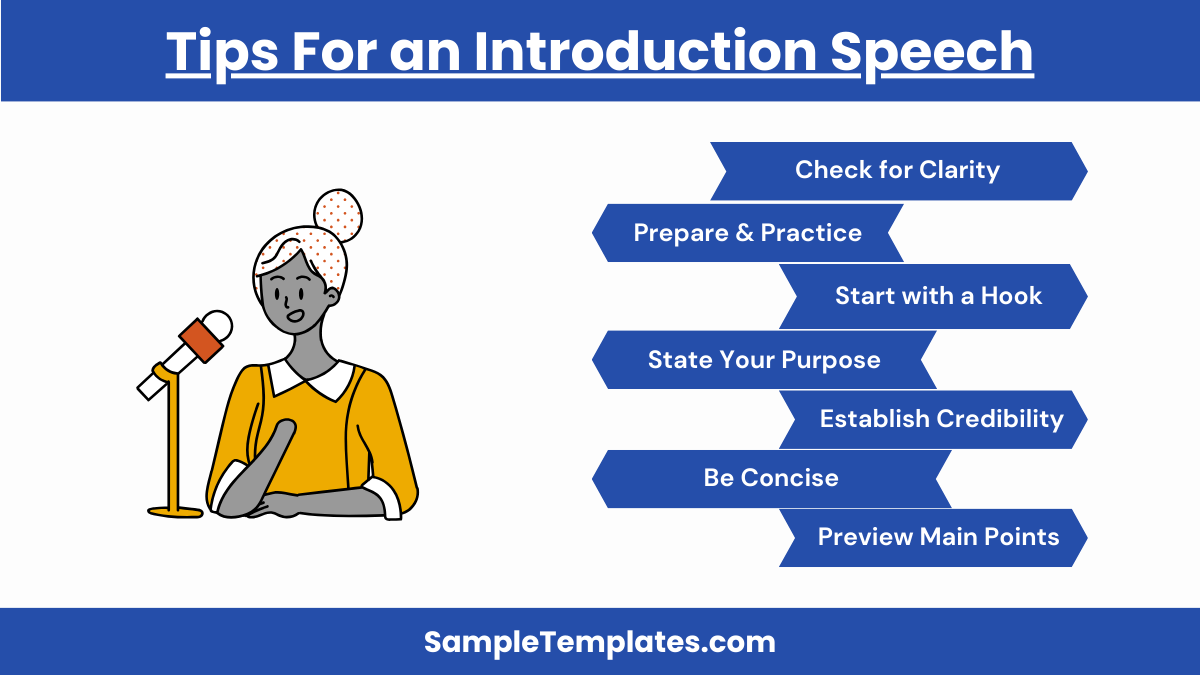
Crafting an effective introduction speech can set the tone for your entire presentation and significantly influence the engagement and responsiveness of your audience. Here are some practical tips to ensure your introduction speech is impactful:
1. Prepare and Practice
- Spend time crafting a clear, concise introduction. Rehearse your opening remarks multiple times to enhance your delivery and ensure fluency, reducing the likelihood of nervousness affecting your performance.
2. Start with a Hook
- Begin with an attention-grabbing statement such as a startling statistic, a provocative question, or an engaging anecdote. This hook should be relevant to your main topic and designed to intrigue your audience immediately.
3. State Your Purpose
- Clearly articulate the purpose of your speech early on. Let your audience know exactly what to expect and why it matters to them. This clarity helps to maintain their interest and focus.
4. Establish Credibility
- Briefly introduce yourself and explain why you’re qualified to speak on the topic. This might include your experience, education, or any personal connection to the subject matter.
5. Connect with Your Audience
- Aim to establish a rapport with your audience. Use inclusive language, and consider acknowledging the presence of notable individuals or expressing gratitude for the opportunity to speak.
6. Be Concise
- Keep your introduction brief. It should be long enough to cover essential points but short enough to keep the audience interested and not detract from the main content of your speech.
7. Preview Main Points
- Give a brief overview of the main points you will cover in your speech. This roadmap can help your audience follow along more easily and understand the structure of your presentation.
8. Use Appropriate Language and Tone
- Match your language and tone to the audience and occasion. A formal gathering will require a different approach compared to a casual meeting, so adjust your language and demeanor accordingly.
9. Check for Clarity
- Ensure that your introduction is clear and understandable. Avoid jargon or technical terms without explanations, especially if they might not be familiar to all members of your audience.
10. End with a Transition
- Conclude your introduction with a smooth transition that naturally leads into the body of your speech. This can help maintain the flow and keep your audience engaged.
By following these tips, your introduction speech will not only capture the attention of your audience but also set a strong foundation for the points you wish to convey throughout your presentation.
Opening Ceremony Speech
Master of Ceremony Speech
Birthday Introduction Speeches
Birthday Speech Sample
Mother’s Birthday Party Introduction Speech
Parent Birthday Speech
Business Introduction Speeches
Annual Business Meeting Speech
Commercial Speech
Business School Speech
Company Introduction Speeches
Company Introduction Example
New Company Introduction
Company Introduction Sample
Chairman Introduction Speech
Chairman Speech Sample
Event Introduction Speeches
Charity Event Introduction
Introduction for College Event
Introduction for Cultural Event
Formal Introduction Speeches
Formal Self-Introduction Speech
Formal Introduction Sample Speech
Farewell Introduction Speeches
Farewell Party Speech
Speech for School Farewell
Guest Introduction Speeches
Chief Guest Introduction
Guest Introduction in PDF
Graduation Introduction Speeches
High School Graduation Speech
Preschool School Graduation Speech
Meeting Introduction Speeches
Opening Town Meeting Speech
Annual General Meeting Speech
Sales Meeting Introduction
What Makes a Good Introduction Speech and How to Start It?
Basically, a good introduction speech can just be a simple introduction of the speaker to the audience. You can modify your speech in a variety of ways so as to catch the attention of the audience. However, a good speech would require that the speaker “befriends” the audience in the sense that the speaker will try to make himself seem more friendly and familiar to the audience so as to gain their attention and involvement to the speech. Now, how to start an introduction speech? It is almost similar to what to say in an introduction speech, but unlike what to say in an introduction speech, there are only a few things you need to know:
1. Greeting the audience
- This is the most important part of any speech. If you do not greet the audience immediately and properly the moment you are in front, the audience will begin to feel distant from you and may choose to ignore you throughout the entire speech.You may also see figure of speech example
- Greet the audience firmly and confidently. This will show the audience that you are prepared for the presentation and therefore they must be prepared for the presentation as well.
- Try not to stammer or sound too “small.” Stammering is a sign of nervousness, and when you are nervous, people will tend to mock or insult you in a way that may cause you to forget about your topic and quite possibly “choke” or stand on the stage quietly.You may also see commemorative speech
2. Stating your name and reason for being in front of them
- Following a proper greeting, you must state your name immediately starting from the family name then the first name then the second name (if you have more than one first name), then you may or may not state your middle initial. The reason for stating your name in this order is to create an even further sense of formality, which may cause the audience to behave more likely.You may also see impromptu speech
- This will give them a sense of formality that will make them more likely to respect you as a person and at the very least sit quietly without disturbing your presentation.
- After stating your name, you should explain as to why you are standing in front of the audience on that very day and time. This must be done so as to keep things formal and to help you remember the topics.You may also see telegraphic speech
3. State problems relevant to your presentation topic
- This is complementary to your short summary of your topic.
- It will make the audience feel more important and more informed, which will more likely cause them to discuss among themselves about the problems relevant to your presentation topic.You may also see father of the bride speech
4. Give a short summary of your topic
- Giving a short summary of your topic will “tease” the audience into curiosity and make them ask what your topic is about and what is its relevance.
- It may also attract individuals in the crowd who may have an interest in your topic, which the interested individuals may influence the non-interested individuals to listen to your topic.You may also see commemorative speech
Employee Introduction Speeches
Employee Self-Introduction Speech
New Employee Introduction
Professional Introduction Speeches
Professional Introduction Sample
Professional Self-Introduction Speech
Pageant Introduction Speeches
Beauty Pageant Introduction
Pageant Contest Introduction
Seminar Introduction Speeches
College Seminar Introduction
Seminar Self-Introduction
Simple Introduction Speeches
Simple Introduction Sample Speech
Wedding Introduction Speeches
Wedding Reception Introduction
Wedding Ceremony Speech
Wedding Anniversary Speech
Church Wedding Speech
Welcome Introduction Speech
Welcome Party Introduction
Student Introduction Speeches
Sample Introduction Outline Speech
Student Council Introduction
How to End an Introduction Speech?
Now we have been discussing how to start an introduction speech or how to make a good introduction speech, by now you should be familiar with how to start an introduction speech or what you should write in it and you may even be able to figure out how your speech or actions affect the audience, but now we are going to discuss how to end an introduction speech. As the saying goes, “all good things must come to an end.” By that saying, everything that has a beginning must eventually end so as to allow the audience to share what they learned during the speech with other individuals.You may also see informative speech
Now to end an introduction speech, you need to do the following:
1. State the summary
- Stating the summary of your speech will allow the audience to likely remember the speech.
- This will clarify anything the audience may misunderstand from the speech.
- It will allow the audience to take down notes about the topics of the speech.
2.Appreciate the audience
- You should also thank the audience for their cooperation and for the time they used in listening to your speech willingly and diligently.
- This will give the audience a sense of accomplishment and making it more likely that they will attend your next speech.You may also see freedom of speech example
3.Give a closing remark
- The closing remark need not be related to the actual speech; it may serve as a way of keeping the audience actively listening and awake.
- It is a way to show that you are about to end the speech and that the audience must prepare themselves to leave the vicinity.You may also see mla outline samples
- It also means that the audience may ask any questions relevant to the speech.
4.Then greet the audience out
- As you will end your speech, you should greet the audience out, meaning that you should allow the audience to exit the area before you leave the stand so as to allow the audience the opportunity to ask question as they are leaving the vicinity.You may also see Elevator Speech
- This will increase how much your audience enjoyed your speech.
How do you start an introduction for a speech?
To start an introduction for a speech, clearly state your topic, engage the audience with a question or startling fact, and briefly outline what your speech will cover.
What is a good sentence to start a speech?
A good sentence to start a speech might be: “Did you know that every minute, one million plastic bottles are bought around the world?”
What are 3 ways to start a speech?
Three ways to start a speech include using a provocative question, sharing a compelling anecdote, or presenting a surprising statistic to capture immediate interest.
How do you greet everyone in a speech?
To greet everyone in a speech, you might say: “Good morning/afternoon/evening, ladies and gentlemen, esteemed guests, and fellow participants, thank you for joining me today.”
Can a speech be 1 minute?
Yes, a speech can be 1 minute; these are often designed to be succinct and impactful, focusing on delivering one clear, persuasive message or idea effectively.
In conclusion, an effective introduction speech sets the tone, establishes rapport, and captures the audience’s interest. It should leave them eager to learn more about the speaker while providing a seamless transition into the main content of the event or presentation.
Related Posts
Timetable
Training Evaluation Forms
Acceptance Speech
Scientific Reports Samples & Templates
Attendance List Samples & Templates
Sample Meeting Minutes Templates
Presentation Speech Samples & Templates
Ukulele Chord Chart Samples & Templates
Retirement Speech Samples & Templates
Weekly Schedule Samples & Templates
Contractual Agreement Samples & Templates
FREE 9+ Amazing Sample Church Bulletin Templates in PSD | PDF
Sample Business Card Templates
Sample Cashier Job Descriptions
Questionnaire Samples
